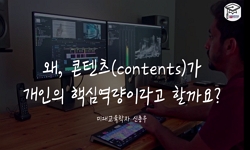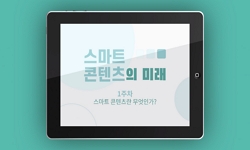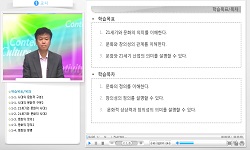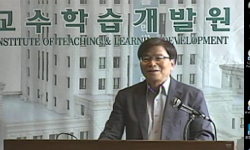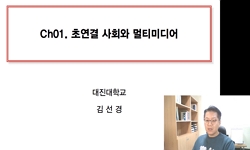증강현실을 이용한 교육용 콘텐츠는 현재 다양한방법으로 연구 발전되고 있는 양상이며, 그중에서도증강현실을 이용한 책들이 가장 많은 비중을 차지하며, 출판업계에서 적극적으로 증강...
http://chineseinput.net/에서 pinyin(병음)방식으로 중국어를 변환할 수 있습니다.
변환된 중국어를 복사하여 사용하시면 됩니다.
- 中文 을 입력하시려면 zhongwen을 입력하시고 space를누르시면됩니다.
- 北京 을 입력하시려면 beijing을 입력하시고 space를 누르시면 됩니다.

증강현실(AR) 기반 교육용 콘텐츠 디자인에 나타난 에듀테인먼트 콘텐츠 요소 연구 = A Study on the Edutainment Contents Elements in Augmented Reality(AR) Educational Contents Design
한글로보기https://www.riss.kr/link?id=A106096805
- 저자
- 발행기관
- 학술지명
- 권호사항
-
발행연도
2019
-
작성언어
Korean
- 주제어
-
등재정보
KCI등재
-
자료형태
학술저널
-
수록면
441-452(12쪽)
-
KCI 피인용횟수
5
- 제공처
-
0
상세조회 -
0
다운로드
부가정보
국문 초록 (Abstract)
증강현실을 이용한 교육용 콘텐츠는 현재 다양한방법으로 연구 발전되고 있는 양상이며, 그중에서도증강현실을 이용한 책들이 가장 많은 비중을 차지하며, 출판업계에서 적극적으로 증강현실을 접목시켜 어린이들의 교육용 콘텐츠들을 생산하고 있는 추세이다.
기존의 종이책 교육 방식에서 확장되어 어린이들의관심과 교육의 효과를 높일 수 있는 증강현실 그림책은 교육 시장에서 새로운 교육방식으로 각광받고 있는 추세이다. 따라서 미래의 희망인 어린이들에게 새로운 교육방식을 제공하고 교육산업의 발전과 더불어어린이들의 직접적인 체험과 흥미 유발을 지속적으로가능하게 할 수 있는 증강현실 교육용 콘텐츠의 발전이 필요하다.
본 연구는 증강현실 교육용 콘텐츠에서 사용자의지속적이고 직접적인 참여를 유도하고, 다양한 학습의효과를 높이기 위한 발전 방안으로서, 사용자의 흥미유발과 교육의 만족도를 높여줄 수 있는 에듀테인먼트(Edutainment) 콘텐츠의 특성을 적용하여 그 유형을 분석해보고자 하였다. 일차적으로 이론적 고찰을통하여 증강현실 개념 및 증강현실 교육용 콘텐츠의유형을 살펴보고, 에듀테인먼트 콘텐츠의 특성을 통한증강현실 교육용 콘텐츠 디자인에서의 에듀테인먼트콘텐츠 요소들을 도출하여 연구에 적용하였다. 증강현실 교육용 콘텐츠의 유형에 따른 분류에 의하여 현재증강현실 교육 분야에서 상용화가 가장 많이 되고 있는 유형 세 가지를 선정하였으며, 국내 사례로만 선별하여 가장 교육용 콘텐츠 중 판매율이 높았던 사례세 가지(AR코드 기반 ‘도라(Dora)’ AR 북, 삼성전자AR 북 플랫폼 ‘둥둥이 시리즈’, ‘꼬마버스 타요’ 증강현실 컬러링 북)를 선정하여 도출된 에듀테인먼트 디자인 요소(놀이와 재미, 다양한 미디어 활용, 상상력과 아이디어 발상, 긍정적인 피드백)를 사례에 적용시켜 연구, 분석 하였다.
분석결과, 증강현실 교육용 콘텐츠는 현실세계에서어린이들의 직접적인 참여가 높고, 증강된 이미지로써현실세계에서 얻을 수 없는 부가적인 정보를 가장 많이 제공해 줄 수 있는 ‘증강현실 컬러링 북’이 에듀테인먼트 콘텐츠의 특성을 가장 많이 포함하고 있었으며, 사용자들에게 교육적으로의 만족감을 가장 많이제공할 수 있고, 지속적인 참여율이 가장 높을 수 있는 요소들을 가지고 있었다. 어린이들의 동기 유발과몰입을 통하여 능동적이고 적극적인 참여를 유도 하는 ‘놀이와 재미’ 요소는 세 가지 사례 모두 포함하고있었지만, 사고력과 이해력을 증진시키고 자기 동기화강화 및 이야기 구성능력을 함양시켜 주는 ‘다양한 미디어 활용’요소는 ‘꼬마버스 타요’ 증강현실 컬러링 북을 제외한 나머지 두 사례에서는 모두 나타나지 않았으며, 창의적 사고의 결과물을 풍부하게 만들어주고어린이들의 문제해결 능력을 증대시켜 줄 수 있는 ‘상상력과 아이디어 발상’ 요소는 ‘삼성전자 AR 북 플랫폼 ‘둥둥이 시리즈’에서는 나타나지 않았다. 또한, 재미요소 첨가를 통하여 어린이들의 지속적인 참여를유도할 수 있는 요소인 ‘긍정적인 피드백’ 요소는 ‘AR 코드 기반 도라(Dora) AR 북’에서는 나타나지 않았다. 결론적으로, 교육 분야에서의 가능성이 무한하게열려있는 증강현실 기술은 사용자의 교육의 효과를극대화하기 위하여 필요한 요소들을 빠르게 파악하여, 직접적인 체험과 지속적인 참여를 바탕으로 사용자의전반적 ...
다국어 초록 (Multilingual Abstract)
Educational Contents using Augmented Reality (AR) are currently being studied and developed in various ways. Among them, books using AR take the largest portion, and the publishing industry actively combines AR to produce educational contents for chil...
Educational Contents using Augmented Reality (AR) are currently being studied and developed in various ways. Among them, books using AR take the largest portion, and the publishing industry actively combines AR to produce educational contents for children trend. The AR picture book which is expanded from the existing paper book method and can enhance the interest of children and the effect of education, is becoming a new educational method in education market. Therefore, it is necessary to develop AR educational content that can provide new education methods to children who are hopeful of the future, and that will enable the direct experience and excitement of children to continue with the development of education industry.
The purpose of this study is to develop a method to induce users’ continuous and direct participation in AR educational contents and to enhance the effectiveness of various learning activities by applying characteristics by applying characteristics of edutainment contents that can enhance users’ tried to analyze the types. Firstly, I investigated the types of AR concept and AR contents through a theoretical review and applied it to the research by deriving edutainment contents elements in contents design for AR education through the characteristics of edutainment contents. Based on the classification of AR educational contents, three types of commercial AR education were selected most frequently. Three types of the most commercialized AR education were selected by classification according to the types of AR reality educational contents (AR code based ‘Dora’ AR Book, Samsung AR Platform ‘dungdung series’, TAYO AR coloring book). Three types of educational contents among the most educational contents were selected by domestic cases. Design elements(Play and fun, Use of various media, Imaginative ideas and positive feedback).
As a result of the analysis, the Ar coloring book, which can provide most of the additional information that can not be obtained in the real world as AR image, and it has the elements that can provide the uses with the most educational satisfaction and the highest participation rate. The ‘play and fun’ factor, which encourages active and participation through motivation and commitment of the children, included all three cases, the ‘use of various media’ factor was not dound in the other two cases except for the ‘TAYO’ AR coloring book, and the ‘imagination and idea’ factor can enrich the reaults of creative thinking and increase children’s element did not appear in ‘Samsung AR DungDung series’. Also, the ‘positive feedback’ factor, which is a factor that can encourage the participation of children through the addition of fun elements, did not appear in ‘AR code based Dora AR book’.
In conclusion, the AR technology, which has unlimited possibilities in the field of education, can quickly identify the necessary factors to maximize the effectiveness of the user’s education and maximize the effectiveness of the use’s overall education based on direct experience and continuous participation. It should be developed based on the characteristics of edutainment contents that can be easily accessible to users who are expecting a users. In addition, it is necessary to continuously study and develop the contents for AR education which can induce the fun and interest of the user steadily to enhance the effect of education and satisfy the user’s experience an perception.
참고문헌 (Reference)
1 삼성경제연구소, "증강현실이 가져올 미래 변화" 2010
2 오영선, "증강현실에서의 가상이미지에 대한 인식과 상호작용성 연구" 홍익대학교 2015
3 하상희, "증강현실 책 일러스트레이션 이미지의 사용자 경험요소" 한국일러스트레이션학회 14 (14): 123-132, 2013
4 이선진, "증강현실 기법을 활용한 아동용 그림책 UI 디자인비교연구" 성균관대학교 2015
5 백영균, "에듀테인먼트의 이해와 활용" 도서출판 정일 2005
6 안성혜, "에듀테인먼트 콘텐츠 디자인" 내하출판사 2018
7 한국콘텐츠진흥원, "색칠하기와 증강현실 기술의 만남‘컬러링북’이 살아 움직인다"
8 김준호, "모바일 환경에서의 증강현실(AR)기술발전과 디지털 디자인의 능동적 활용 방안" 한국디지털디자인학회 11 (11): 343-357, 2011
9 고운정, "그림책을 이용한 증강현실(AR) 모바일 앱북 연구 : 도식기 아동 7세, 8세, 9세를 중심으로" 이화여자대학교 디자인대학원 2013
10 "https://www.hottracks.co.kr/ht/product/detail?barcode=2310025426012"
1 삼성경제연구소, "증강현실이 가져올 미래 변화" 2010
2 오영선, "증강현실에서의 가상이미지에 대한 인식과 상호작용성 연구" 홍익대학교 2015
3 하상희, "증강현실 책 일러스트레이션 이미지의 사용자 경험요소" 한국일러스트레이션학회 14 (14): 123-132, 2013
4 이선진, "증강현실 기법을 활용한 아동용 그림책 UI 디자인비교연구" 성균관대학교 2015
5 백영균, "에듀테인먼트의 이해와 활용" 도서출판 정일 2005
6 안성혜, "에듀테인먼트 콘텐츠 디자인" 내하출판사 2018
7 한국콘텐츠진흥원, "색칠하기와 증강현실 기술의 만남‘컬러링북’이 살아 움직인다"
8 김준호, "모바일 환경에서의 증강현실(AR)기술발전과 디지털 디자인의 능동적 활용 방안" 한국디지털디자인학회 11 (11): 343-357, 2011
9 고운정, "그림책을 이용한 증강현실(AR) 모바일 앱북 연구 : 도식기 아동 7세, 8세, 9세를 중심으로" 이화여자대학교 디자인대학원 2013
10 "https://www.hottracks.co.kr/ht/product/detail?barcode=2310025426012"
11 "http://www.kocca.kr/"
12 "http://www.datanet.co.kr/"
13 "http://review.cetizen.com/"
14 "http://naver.me/FVe6fZyk"
15 "http://koreancontent.kr/tag/%EC%A6%9D%EA%B0%95%ED%98%84%EC%8B%A4"
16 "http://ko.wikipedia.org/wiki/"
17 Milgram, P., "Taxonomy of Mixed Reality Visual Display" 1994
동일학술지(권/호) 다른 논문
-
- 한국디자인문화학회
- 모정희
- 2019
- KCI등재
-
- 한국디자인문화학회
- 손호남
- 2019
- KCI등재
-
마녀의 시각적 표현 양상에 대한 인식 변화의 고찰 -지브리와 디즈니 애니메이션 마녀 캐릭터들을 중심으로-
- 한국디자인문화학회
- 송도선
- 2019
- KCI등재
-
- 한국디자인문화학회
- 김병문
- 2019
- KCI등재
분석정보
인용정보 인용지수 설명보기
학술지 이력
| 연월일 | 이력구분 | 이력상세 | 등재구분 |
|---|---|---|---|
| 2026 | 평가예정 | 재인증평가 신청대상 (재인증) | |
| 2020-01-01 | 평가 | 등재학술지 유지 (재인증) |  |
| 2017-01-01 | 평가 | 등재학술지 유지 (계속평가) |  |
| 2013-01-01 | 평가 | 등재학술지 유지 (등재유지) |  |
| 2010-01-01 | 평가 | 등재학술지 유지 (등재유지) |  |
| 2007-01-01 | 평가 | 등재학술지 선정 (등재후보2차) |  |
| 2006-01-01 | 평가 | 등재후보 1차 PASS (등재후보1차) |  |
| 2004-01-01 | 평가 | 등재후보학술지 선정 (신규평가) |  |
학술지 인용정보
| 기준연도 | WOS-KCI 통합IF(2년) | KCIF(2년) | KCIF(3년) |
|---|---|---|---|
| 2016 | 0.6 | 0.6 | 0.54 |
| KCIF(4년) | KCIF(5년) | 중심성지수(3년) | 즉시성지수 |
| 0.52 | 0.5 | 0.732 | 0.06 |




 DBpia
DBpia